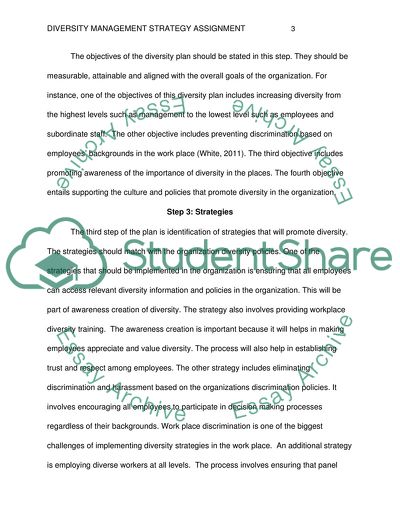DIVERSITY MANAGEMENT STRATEGY ASSIGNMENT Example | Topics and Well Written Essays - 750 words. https://studentshare.org/human-resources/1843782-diversity-management-strategy-assignment
DIVERSITY MANAGEMENT STRATEGY ASSIGNMENT Example | Topics and Well Written Essays - 750 Words. https://studentshare.org/human-resources/1843782-diversity-management-strategy-assignment.


